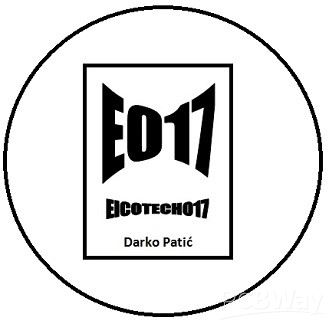A Complete Battery Capacity Measurement Device, Using Arduino-Nano [Lithium-NiMH-NiCd]
Features:
Identify a fake Lithium-Ion/Lithium-Polymer/NiCd/NiMH battery
Adjustable constant current load (can also be modified by the user)
Capable of measuring the capacity of almost any kind of battery (below 5V)
Easy to solder, build, and use, even for beginners (all components are Dip)
An LCD user interface
Specifications:
Board Supply: 7V to 9V(Max)
Battery Input: 0-5V(max) – no reverse polarity
Constant Current Load: 37mA to 540mA(max) – 16 Steps – can be modified by the user
The true measurement of a battery’s capacity is essential for many scenarios. A capacity measurement device can solve the problem of spotting fake batteries as well. Nowadays fake Lithium and NiMH batteries are everywhere which don’t handle their advertised capacities. Sometimes it is difficult to distinguish between a real and a fake battery. This problem exists in the spare batteries market, such as cell phone batteries. Furthermore, in many scenarios, it is essential to determine the capacity of a second-hand battery (for instance a laptop battery). In this article, we will learn to build a battery capacity measurement circuit using the famous Arduino-Nano board. I’ve designed the PCB board for dip components. So even beginners can solder and use the device.
Schematic

PCB

Bill of Materials

Arduino Code
#include <LiquidCrystal.h>
#include <JC_Button.h>
const float Low_BAT_level = 3.2;
//Current steps with a 3R load (R7)
const int Current[] = {0, 37, 70, 103, 136, 169, 202, 235, 268, 301, 334, 367, 400, 440, 470, 500, 540};
const byte RS = 2, EN = 3, D4 = 4, D5 = 5, D6 = 6, D7 = 7;
const byte PWM_Pin = 10;
const byte Speaker = 12;
const int BAT_Pin = A0;
int PWM_Value = 0;
unsigned long Capacity = 0;
int ADC_Value = 0;
float BAT_Voltage = 0;
byte Hour = 0, Minute = 0, Second = 0;
bool calc = false, Done = false;
LiquidCrystal lcd(RS, EN, D4, D5, D6, D7);
Button UP_Button(16, 25, false, true);
Button Down_Button(15, 25, false, true);
void setup() {
pinMode(PWM_Pin, OUTPUT);
pinMode(Speaker, OUTPUT);
analogWrite(PWM_Pin, PWM_Value);
UP_Button.begin();
Down_Button.begin();
lcd.setCursor(0, 0);
lcd.begin(16, 2);
lcd.print("Battery Capacity");
lcd.setCursor(0, 1);
lcd.print("Measurement v1.0");
delay(3000);
lcd.clear();
lcd.print("Load Adj:UP/Down");
lcd.setCursor(0, 1);
lcd.print("0");
}
void loop() {
UP_Button.read();
Down_Button.read();
if (UP_Button.wasReleased() && PWM_Value < 80 && calc == false)
{
PWM_Value = PWM_Value + 5;
analogWrite(PWM_Pin, PWM_Value);
lcd.setCursor(0, 1);
lcd.print(" ");
lcd.setCursor(0, 1);
lcd.print(String(Current[PWM_Value / 5]) + "mA");
}
if (Down_Button.wasReleased() && PWM_Value > 1 && calc == false)
{
PWM_Value = PWM_Value - 5;
analogWrite(PWM_Pin, PWM_Value);
lcd.setCursor(0, 1);
lcd.print(" ");
lcd.setCursor(0, 1);
lcd.print(String(Current[PWM_Value / 5]) + "mA");
}
if (UP_Button.pressedFor(1000) && calc == false)
{
digitalWrite(Speaker, HIGH);
delay(100);
digitalWrite(Speaker, LOW);
lcd.clear();
timerInterrupt();
}
}
void timerInterrupt() {
calc = true;
while (Done == false) {
Second ++;
if (Second == 60) {
Second = 0;
Minute ++;
lcd.clear();
}
if (Minute == 60) {
Minute = 0;
Hour ++;
}
lcd.setCursor(0, 0);
lcd.print(String(Hour) + ":" + String(Minute) + ":" + String(Second));
lcd.setCursor(9, 0);
ADC_Value = analogRead(BAT_Pin);
BAT_Voltage = ADC_Value * (5.0 / 1024);
lcd.print("V:" + String(BAT_Voltage));
lcd.setCursor(0, 1);
lcd.print("BAT-C: Wait!...");
if (BAT_Voltage < Low_BAT_level)
{
lcd.setCursor(0, 1);
lcd.print(" ");
lcd.setCursor(0, 1);
Capacity = (Hour * 3600) + (Minute * 60) + Second;
Capacity = (Capacity * Current[PWM_Value / 5]) / 3600;
lcd.print("BAT-C:" + String(Capacity) + "mAh");
Done = true;
PWM_Value = 0;
analogWrite(PWM_Pin, PWM_Value);
digitalWrite(Speaker, HIGH);
delay(100);
digitalWrite(Speaker, LOW);
delay(100);
digitalWrite(Speaker, HIGH);
delay(100);
digitalWrite(Speaker, LOW);
}
delay(1000);
}
}
A Complete Battery Capacity Measurement Device, Using Arduino-Nano [Lithium-NiMH-NiCd]
*PCBWay community is a sharing platform. We are not responsible for any design issues and parameter issues (board thickness, surface finish, etc.) you choose.

Raspberry Pi 5 7 Inch Touch Screen IPS 1024x600 HD LCD HDMI-compatible Display for RPI 4B 3B+ OPI 5 AIDA64 PC Secondary Screen(Without Speaker)
BUY NOW
ESP32-S3 4.3inch Capacitive Touch Display Development Board, 800×480, 5-point Touch, 32-bit LX7 Dual-core Processor
BUY NOW
Raspberry Pi 5 7 Inch Touch Screen IPS 1024x600 HD LCD HDMI-compatible Display for RPI 4B 3B+ OPI 5 AIDA64 PC Secondary Screen(Without Speaker)
BUY NOW- Comments(2)
- Likes(7)
 Log in to post comments.
Log in to post comments.
 Mitch AltmanMay 12,20200 CommentsReply
Mitch AltmanMay 12,20200 CommentsReply PCBWay Support TeamApr 13,20200 CommentsReply
PCBWay Support TeamApr 13,20200 CommentsReply
-
 Commodore Bench
Jul 21,2022
Commodore Bench
Jul 21,2022
-
 Engineer
Aug 09,2021
Engineer
Aug 09,2021
-
 Arpad Attila Bakos
Apr 25,2021
Arpad Attila Bakos
Apr 25,2021
-
 DarkoPatic
May 14,2020
DarkoPatic
May 14,2020
-
 Engineer
May 04,2020
Engineer
May 04,2020
-
 Marco Guerrato
Apr 22,2020
Marco Guerrato
Apr 22,2020
-
 William Ronald Boyd
Apr 14,2020
William Ronald Boyd
Apr 14,2020
- 8 USER VOTES
- YOUR VOTE 0.00 0.00
- 1
- 2
- 3
- 4
- 5
- 6
- 7
- 8
- 9
- 10
- 1
- 2
- 3
- 4
- 5
- 6
- 7
- 8
- 9
- 10
- 1
- 2
- 3
- 4
- 5
- 6
- 7
- 8
- 9
- 10
- 1
- 2
- 3
- 4
- 5
- 6
- 7
- 8
- 9
- 10

-
6design
-
9usability
-
8creativity
-
10content

-
9design
-
9usability
-
10creativity
-
9content

-
7design
-
6usability
-
6creativity
-
6content

-
7design
-
9usability
-
8creativity
-
9content

-
8design
-
9usability
-
7creativity
-
10content

-
8design
-
8usability
-
8creativity
-
9content

-
9design
-
10usability
-
10creativity
-
9content
-
10design
-
10usability
-
10creativity
-
10content
 More by Hesam Moshiri
More by Hesam Moshiri
-
 40V-30A Adjustable Switching Power Supply
A DC-to-DC converter is one of the most commonly used circuit topologies in electronics, especially ...
40V-30A Adjustable Switching Power Supply
A DC-to-DC converter is one of the most commonly used circuit topologies in electronics, especially ...
-
 Graphical Temperature & Humidity Control Unit Using a Raspberry Pi Pico [Home Automation]
Raspberry Pi Pico is a cute piece of hardware. It is equipped with a powerful dual-core RP2040 micro...
Graphical Temperature & Humidity Control Unit Using a Raspberry Pi Pico [Home Automation]
Raspberry Pi Pico is a cute piece of hardware. It is equipped with a powerful dual-core RP2040 micro...
-
 Infrared Remote Control Decoder & Switcher Board
Infrared remote controllers are everywhere around us. The majority of home appliances are controlled...
Infrared Remote Control Decoder & Switcher Board
Infrared remote controllers are everywhere around us. The majority of home appliances are controlled...
-
 0-30V, 0-7A Adjustable Switching Power Supply
The DC to DC buck converter is a famous topology in the electronic and a widely used circuit in elec...
0-30V, 0-7A Adjustable Switching Power Supply
The DC to DC buck converter is a famous topology in the electronic and a widely used circuit in elec...
-
 Adjustable Switching Power Supply Using LM2576 [Buck Converter, CC-CV]
Switching power supplies are known for high efficiency. An adjustable voltage/current supply is an i...
Adjustable Switching Power Supply Using LM2576 [Buck Converter, CC-CV]
Switching power supplies are known for high efficiency. An adjustable voltage/current supply is an i...
-
 A Complete Battery Capacity Measurement Device, Using Arduino-Nano [Lithium-NiMH-NiCd]
Features:Identify a fake Lithium-Ion/Lithium-Polymer/NiCd/NiMH batteryAdjustable constant current lo...
A Complete Battery Capacity Measurement Device, Using Arduino-Nano [Lithium-NiMH-NiCd]
Features:Identify a fake Lithium-Ion/Lithium-Polymer/NiCd/NiMH batteryAdjustable constant current lo...
-
 Wireless Home Automation (Control and Monitoring) Using a Nextion HMI Display
Nowadays home automation is a trending topic among electronic enthusiasts and even the mass populati...
Wireless Home Automation (Control and Monitoring) Using a Nextion HMI Display
Nowadays home automation is a trending topic among electronic enthusiasts and even the mass populati...
-
 High Precision Digital AC Energy Meter Circuit Voltage-Current-Power-KWh
Disclaimer: Some parts of this circuit carry dangerous Mains voltage. Be careful with your experimen...
High Precision Digital AC Energy Meter Circuit Voltage-Current-Power-KWh
Disclaimer: Some parts of this circuit carry dangerous Mains voltage. Be careful with your experimen...
-
 40V-30A Adjustable Switching Power Supply
A DC-to-DC converter is one of the most commonly used circuit topologies in electronics, especially ...
40V-30A Adjustable Switching Power Supply
A DC-to-DC converter is one of the most commonly used circuit topologies in electronics, especially ...
-
 Graphical Temperature & Humidity Control Unit Using a Raspberry Pi Pico [Home Automation]
Raspberry Pi Pico is a cute piece of hardware. It is equipped with a powerful dual-core RP2040 micro...
Graphical Temperature & Humidity Control Unit Using a Raspberry Pi Pico [Home Automation]
Raspberry Pi Pico is a cute piece of hardware. It is equipped with a powerful dual-core RP2040 micro...
-
 Infrared Remote Control Decoder & Switcher Board
Infrared remote controllers are everywhere around us. The majority of home appliances are controlled...
Infrared Remote Control Decoder & Switcher Board
Infrared remote controllers are everywhere around us. The majority of home appliances are controlled...
-
 0-30V, 0-7A Adjustable Switching Power Supply
The DC to DC buck converter is a famous topology in the electronic and a widely used circuit in elec...
0-30V, 0-7A Adjustable Switching Power Supply
The DC to DC buck converter is a famous topology in the electronic and a widely used circuit in elec...
-
 Adjustable Switching Power Supply Using LM2576 [Buck Converter, CC-CV]
Switching power supplies are known for high efficiency. An adjustable voltage/current supply is an i...
Adjustable Switching Power Supply Using LM2576 [Buck Converter, CC-CV]
Switching power supplies are known for high efficiency. An adjustable voltage/current supply is an i...
-
 A Complete Battery Capacity Measurement Device, Using Arduino-Nano [Lithium-NiMH-NiCd]
Features:Identify a fake Lithium-Ion/Lithium-Polymer/NiCd/NiMH batteryAdjustable constant current lo...
A Complete Battery Capacity Measurement Device, Using Arduino-Nano [Lithium-NiMH-NiCd]
Features:Identify a fake Lithium-Ion/Lithium-Polymer/NiCd/NiMH batteryAdjustable constant current lo...
-
 Wireless Home Automation (Control and Monitoring) Using a Nextion HMI Display
Nowadays home automation is a trending topic among electronic enthusiasts and even the mass populati...
Wireless Home Automation (Control and Monitoring) Using a Nextion HMI Display
Nowadays home automation is a trending topic among electronic enthusiasts and even the mass populati...
-
 High Precision Digital AC Energy Meter Circuit Voltage-Current-Power-KWh
Disclaimer: Some parts of this circuit carry dangerous Mains voltage. Be careful with your experimen...
High Precision Digital AC Energy Meter Circuit Voltage-Current-Power-KWh
Disclaimer: Some parts of this circuit carry dangerous Mains voltage. Be careful with your experimen...
-
 40V-30A Adjustable Switching Power Supply
A DC-to-DC converter is one of the most commonly used circuit topologies in electronics, especially ...
40V-30A Adjustable Switching Power Supply
A DC-to-DC converter is one of the most commonly used circuit topologies in electronics, especially ...
-
 Graphical Temperature & Humidity Control Unit Using a Raspberry Pi Pico [Home Automation]
Raspberry Pi Pico is a cute piece of hardware. It is equipped with a powerful dual-core RP2040 micro...
Graphical Temperature & Humidity Control Unit Using a Raspberry Pi Pico [Home Automation]
Raspberry Pi Pico is a cute piece of hardware. It is equipped with a powerful dual-core RP2040 micro...
-
 Infrared Remote Control Decoder & Switcher Board
Infrared remote controllers are everywhere around us. The majority of home appliances are controlled...
Infrared Remote Control Decoder & Switcher Board
Infrared remote controllers are everywhere around us. The majority of home appliances are controlled...
-
 0-30V, 0-7A Adjustable Switching Power Supply
The DC to DC buck converter is a famous topology in the electronic and a widely used circuit in elec...
0-30V, 0-7A Adjustable Switching Power Supply
The DC to DC buck converter is a famous topology in the electronic and a widely used circuit in elec...
-
Commodore 64 1541-II Floppy Disk Drive C64 Power Supply Unit USB-C 5V 12V DIN connector 5.25
111 0 2 -
Easy to print simple stacking organizer with drawers
69 0 0 -
-
-
-
Modifying a Hotplate to a Reflow Solder Station
1108 1 6 -
MPL3115A2 Barometric Pressure, Altitude, and Temperature Sensor
624 0 1 -
-
Nintendo 64DD Replacement Shell
475 0 2 -
V2 Commodore AMIGA USB-C Power Sink Delivery High Efficiency Supply Triple Output 5V ±12V OLED display ATARI compatible shark 100W
1386 4 3














































